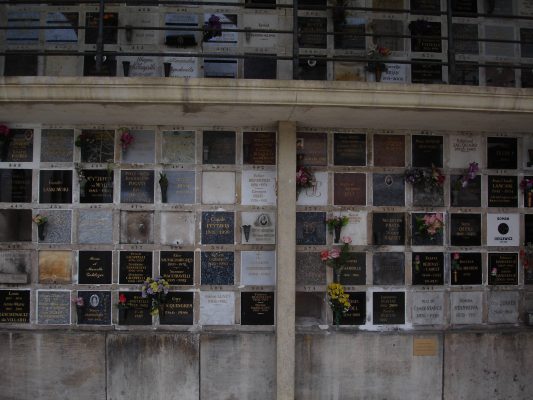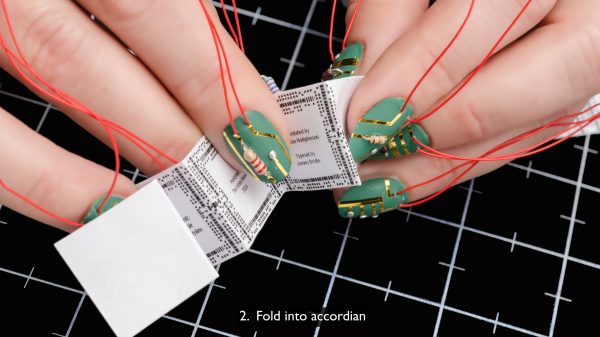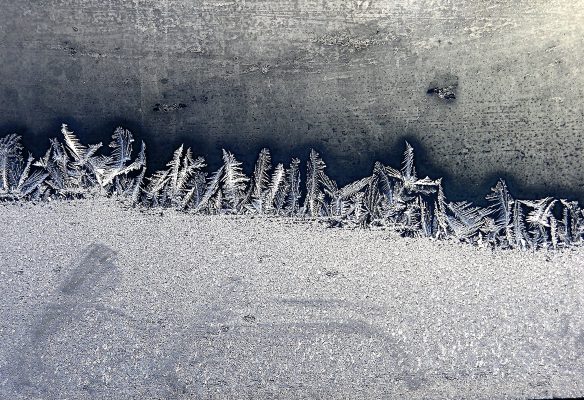I stood near the columbarium at Père Lachaise cemetery. I was there to see the locker-like vault containing the ashes of Georges Perec, kept alongside those of his aunt, Esther Bienenfeld. To the right of the plaque bearing their names and dates someone had affixed a wildflower to the wall with a Tom and Jerry sticking plaster. The columbarium contains thousands of urns stacked in a two-storey grid along one wall of the arcade. Its cloister-like arches surround the domed crematorium and its looming chimneys.
I only recently found Perec’s final resting place, even though I have been reading his work for years – first out of interest, and then as a postgraduate student. I knew he had died in 1982, aged just 45, but I hadn’t considered visiting his grave, and didn’t have any idea of its location. When you’re trying to research something – certainly when I’m trying to research something – it can be a haphazard, unhappy process, and that was my experience of my Ph.D. years spent attempting to find something original in works already pored over. Nevertheless, on occasion something unusual – something that escaped the functional framework I’d been forced to construct for myself – caught my eye, dragged me in, and these are the moments I remember most fondly from my time as a postgraduate student. Everything I wrote over those years lies on a shelf somewhere, but everything I need is carried with me: mediated by memory, brought back to me by walking the streets of Paris.
It was two years since I had spent a long day in the Bibliothèque de l’Arsenal – a branch of the French National Library on the right bank of the Seine. I was reading through the copious notes that Perec had taken while walking around the French capital as part of his Lieux project, a byzantine autobiographical construction that focused on twelve places in the city known to him; the project was to have taken twelve years to complete, but was never finished. The aspect of Perec’s investigations that most intrigued me was his focus on the rue Vilin, a street where he had spent the first few years of his life before his father, a soldier, was killed in the Second World War and his mother deported to Auschwitz, where she died. Rue Vilin is in the neighbourhood of Belleville, in north-eastern Paris, and stands on hills overlooking the city centre. Perec’s Jewish family lived in an area described by his biographer David Bellos as ‘a whole Yiddish town within sight of the Eiffel Tower.’ While this street had an obvious emotional resonance for the writer, Perec sought to record his experience there as ‘simply, flatly’ as he could. A series of descriptive texts of each place made up one half of his project – the other half consisting of his memories of the same places. Perec’s descriptions of the rue Vilin capture a place that’s about to be erased: long designated a slum area, it has been marked for extensive redevelopment and reconstruction. It is far from a stable repository for Perec’s past.
Perec, having spent many years avoiding the street, eventually returned to rue Vilin accompanied by his friend Pierre Getzler. One day on the rue de l’Ermitage Perec was told by Getzler that rue Vilin was merely a couple of streets away. They called there briefly on their way back to Perec’s apartment on the Left Bank; Perec believed this to be his first visit to the street since childhood. Later, learning from Getzler that almost everything on rue Vilin was to be demolished, Perec began to integrate descriptions and memories of the place into his ever-expanding project.
The Casier reports, compiled between 1894 and 1914, had declared Belleville an îlot insalubre – unhealthy block – as part of a process of improving hygiene in Paris. Seventeen areas of Paris were designated unhealthy, and a programme of demolition and rebuilding was eventually undertaken, a policy that was pursued in earnest from the late 1950s onwards. Pierre Merlin notes of these unhealthy areas that the ‘hygienist tradition, prolonged by the modern movement, pushed for the consideration of their destruction’. As the older houses were cleared, residents were offered new housing in modern blocks. While most decaying buildings near the centre of the city were preserved or restored, whole streets at the edge of the city were destroyed to be replaced by radically different forms of housing. By the late 1960s, this process had reached îlot 7, the area in Belleville around the church of Notre-Dame-de-la-Croix, which included rue Vilin.




